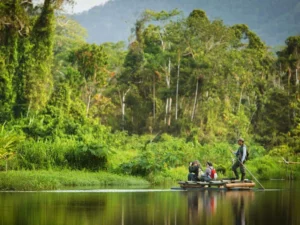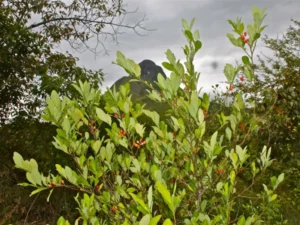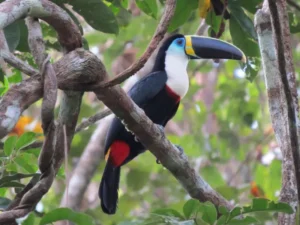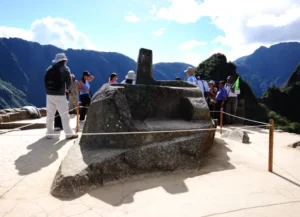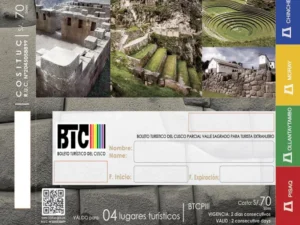The Best Activities for Children in Manu National Park
An educational and safe experience in one of the most biodiverse ecosystems on the planet.
Manu National Park, located in the Peruvian Amazon, is considered one of the most important biodiversity sanctuaries in the world. Recognized as a Natural World Heritage Site by UNESCO and a Biosphere Reserve, this protected area offers a unique opportunity for families seeking to combine adventure, environmental education and authentic contact with nature.
Although its environment is wild, there are activities specially designed or adaptable for children that guarantee a safe, enriching and deeply meaningful experience. The following is a detailed tour of the best family activities in Manu National Park, focusing on learning, sustainability and enjoyment in natural surroundings.

Contents
- 1 1. Responsible Wildlife Sightings
- 2 2. Canoe navigation in Cochas and Rivers
- 3 3. Guided Hiking along Ecological Trails
- 4 4. Birding with an Educational Approach
- 5 5. Staying at Ecological Inns with Family Programs
- 6 6. Cultural Exchange with Indigenous Communities
- 7 Key Recommendations for Traveling with Children to Manu
- 8 Conclusion
1. Responsible Wildlife Sightings
One of the most impressive experiences for children is to observe animals in their natural habitat, without barriers or zoos. Manu National Park is home to an extraordinarily rich fauna, and with the right guidance, children can approach it safely and respectfully.
Among the species that can be observed are:
- Howler monkeys
- Choro monkeys
- Giant otters
- Macaws and parrots in clay licks
- Caimans of the Amazon
- Spectacled bear (in high areas of the park)
This type of activity should always be done under the supervision of certified naturalist guides, maintaining a recommended minimum distance of 10 to 15 meters from the animals. The use of binoculars and zoom cameras allows for detailed observation without interfering with their natural behavior.

Canoe tours through lagoons or secondary rivers allow for a quiet immersion in Manu‘s aquatic ecosystem. This activity is especially suitable for families, as it combines calm, natural beauty and observation opportunities.
The most recommended areas for this type of ride include:
- Cocha Salvador
- Cocha Orellana
- Controlled sections of the Manu River
During the navigation, children can observe aquatic birds, fish, floating plants and even otters or alligators. The experience encourages active listening, patience and respect for quiet environments. All boats must have life jackets and be accompanied by trained crew.

3. Guided Hiking along Ecological Trails
Manu’s trails are designed to allow controlled access to different strata of the rainforest, with emphasis on environmental interpretation. They are ideal for families, as they offer short, well-marked trails with educational stops.
Main characteristics:
- Distances between 1 and 3 kilometers
- Guides specialized in environmental education
- Stops to explain ecological relations, medicinal flora and local fauna
During the hike, children can participate in activities such as identifying animal tracks, recognizing emblematic trees such as ceiba or rubber trees, and observing natural interactions such as pollination or mimicry.
We recommend the use of trekking shoes, long-sleeved clothing, ecological repellent and a reusable water bottle.

4. Birding with an Educational Approach
With more than 600 bird species recorded, Manu is a priority destination for ornithology. This activity can be easily adapted for children, making it a fun and educational tool.
Some of the most outstanding species are:
- Red and blue macaw
- Giant woodpecker
- Hoatzin
- Harpy eagle (rare, but possible in remote areas)
To make the experience more engaging, field notebooks, illustrated Manu bird cards, or offline mobile applications that help identify species by their song or plumage can be used. The focus should be on progressive learning, not forced observation.
5. Staying at Ecological Inns with Family Programs
Several accredited lodges in the park’s buffer zone offer structured programs for families, with specific activities for children. These experiences are designed to complement daytime exploration with moments of reflection, creativity, and relaxation.
Common activities in family inns:
- Craft workshops with natural materials (seeds, vegetable fibers).
- Storytelling about Amazonian myths
- Night sounds identification games
- Insect observation with UV light
When selecting an inn, it is essential to verify that it has sustainable tourism certifications, staff trained in first aid and experience in caring for children.
6. Cultural Exchange with Indigenous Communities
Some local communities, such as the Yine, Machiguenga and Harakmbut, participate in regulated and ethical community-based tourism programs. These visits allow children to understand ways of life in harmony with nature.
Appropriate cultural activities:
- Traditional dance and music demonstrations
- Presentation of instruments made from natural materials
- Introduction to medicinal plants and their ancestral use
- Oral storytelling about the jungle and animals
It is essential that these visits are conducted with prior authorization, in coordination with local organizations and with a respectful approach. Intrusive physical contact and photography without consent are not permitted.
7. Environmental Science Workshops for Children
In collaboration with research centers or specialized guides, some tours include scientific activities adapted for children. These experiences encourage critical thinking and interest in biology and ecology.
Examples of workshops:
- Use of entomological nets for insect capture and release
- Recording of animal tracks on wet trails
- Simple analysis of leaves or water with digital magnifiers
These activities are designed to simulate the field work of a biologist, promoting respect for scientific methods and conservation.
Key Recommendations for Traveling with Children to Manu
Suggested minimum age: 6 years and older. Younger children may attend, but require additional planning.
Best time to visit: May to October. This dry season facilitates access, reduces the presence of mosquitoes and improves conditions for outdoor activities.
Health and safety:
- Yellow fever vaccine (mandatory)
- Pre-travel medical consultation
- Child-safe repellent (approved by EPA or health authorities)
- Family medicine cabinet with basic medicines
Recommended luggage:
- Lightweight long-sleeved clothing (sun and insect protection)
- Closed and slip-resistant footwear
- Hat or cap
- Binoculars and zoom camera
- Reusable water bottle
Selection of tour operator:
- Prefer companies licensed by SERNANP.
- Verify that the guides have official certification
- Include travel insurance with medical coverage in remote areas.
Conclusion
Manu National Park is not only accessible to families, but represents one of the most valuable educational experiences a child can have in direct contact with nature. With proper planning, qualified guides and a responsible approach, the activities described here offer a perfect balance between adventure, learning and conservation.
This experience transcends traditional tourism. For children, it means developing a deep environmental awareness, based on respect, curiosity and admiration for biodiversity. For parents, it is an opportunity to form global citizens committed to protecting the planet.
Manu is not just a destination. It is a living lesson in ecology, sustainability and connection with the essential.


